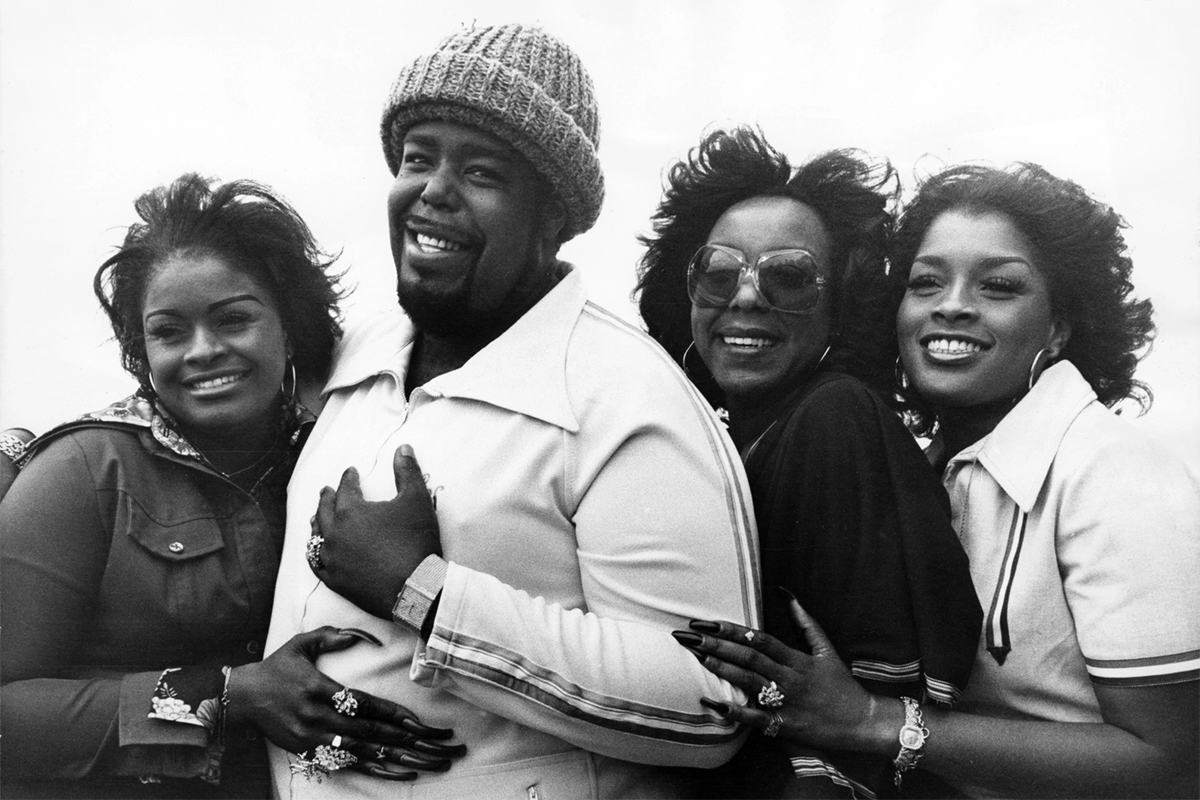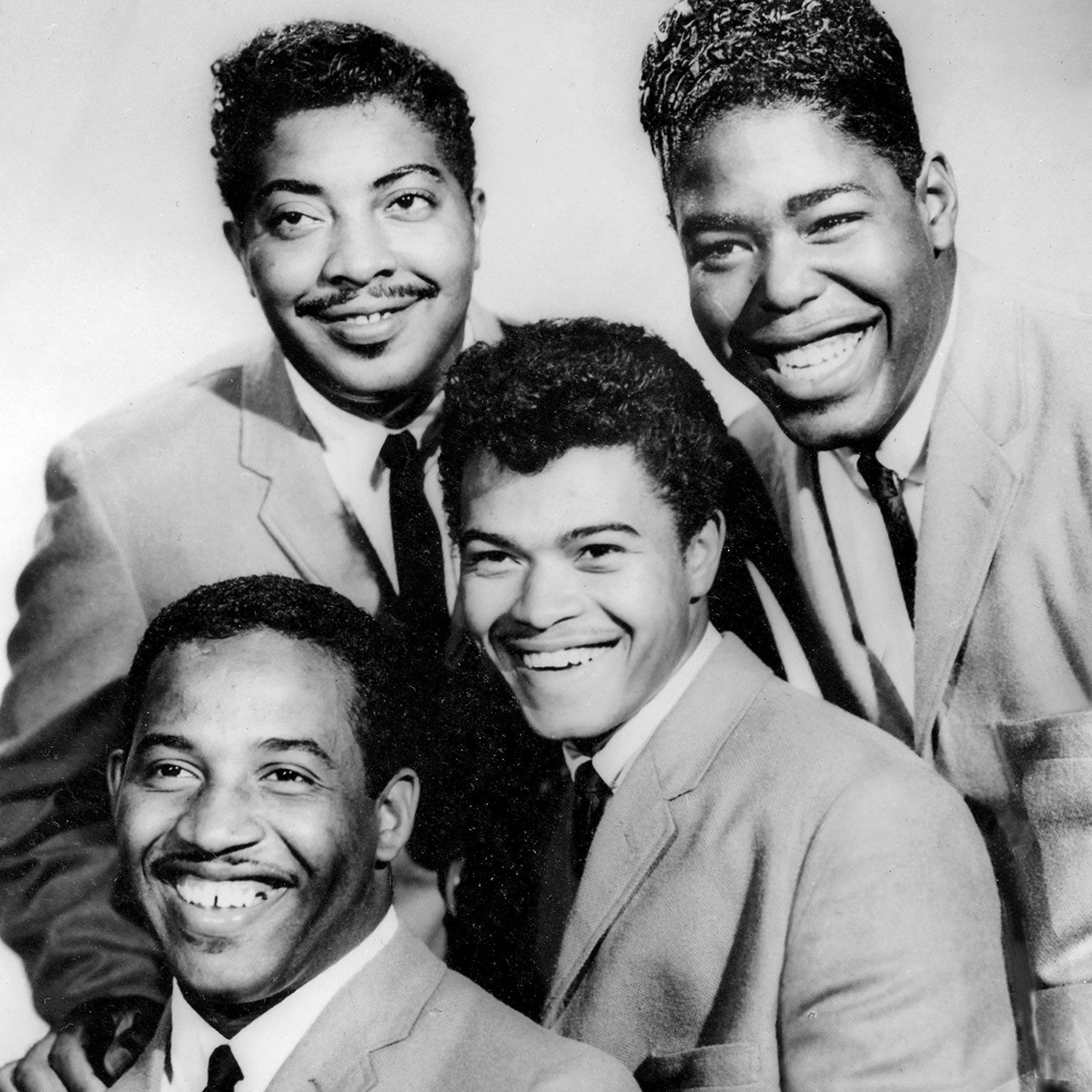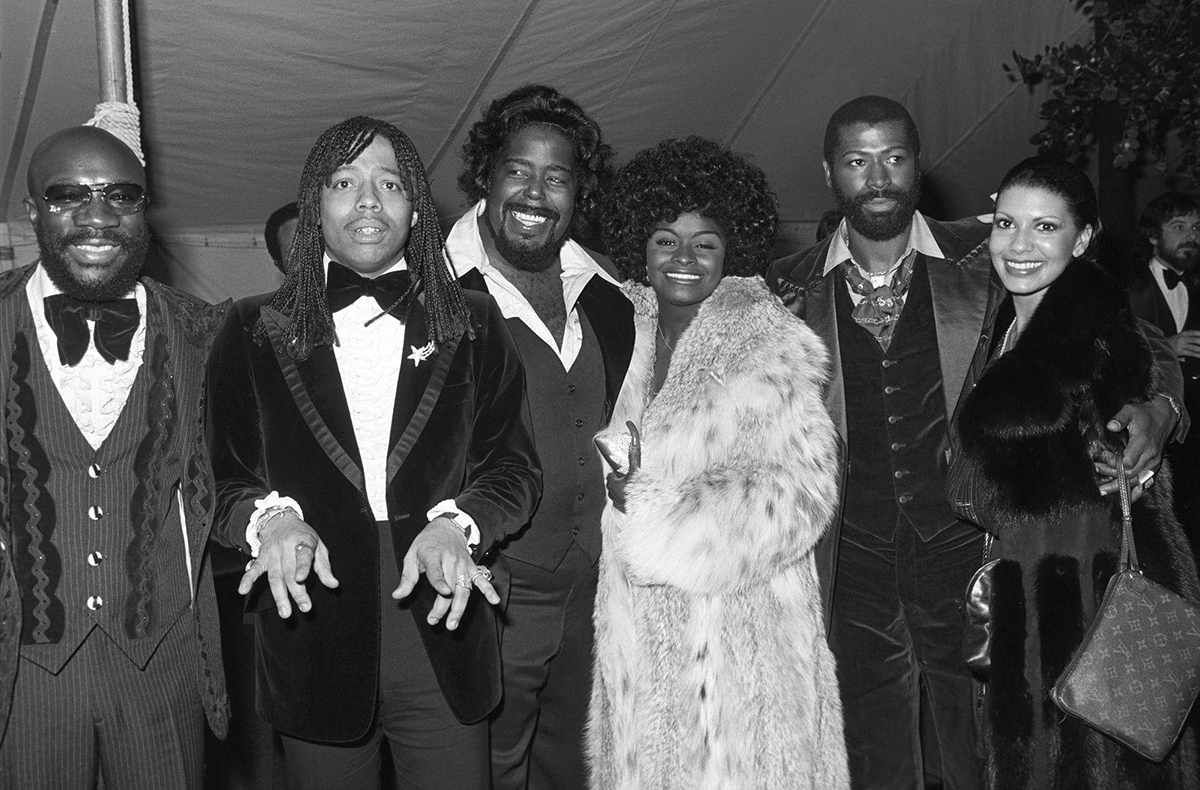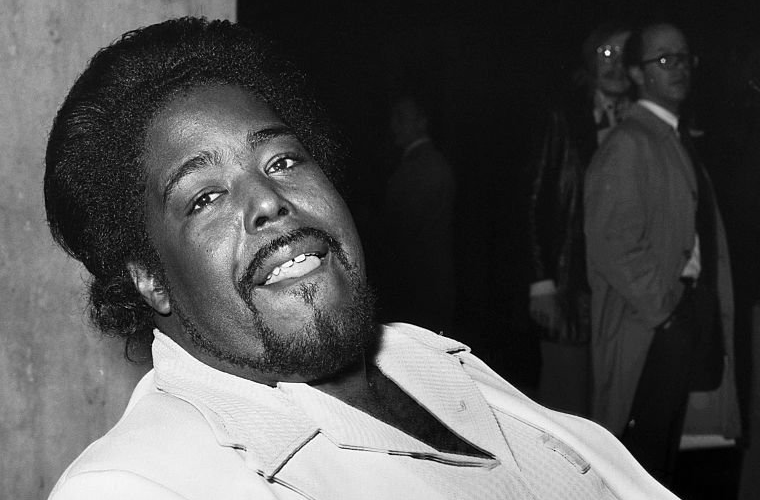Born in Galveston, Texas, Barry White grew up singing gospel songs with his mother and taught himself to play piano. He made his first record when he was 16 with a group called the Upfronts. The song was called “Little Girl” and was released on a local L.A. label. Later he worked for various independent labels around Los Angeles, landing an A&R position with Bob Keane, the man responsible for the first pop recordings by Sam Cooke. One of his labels, Mustang, was hot at the time with a group called the Bobby Fuller Four in 1966. White was hired for 40 dollars a week to do A&R for Keane’s family of labels: Del-Fi, Mustang, and Bronco. White flirted with the idea of being a recording artist, making a record for Bronco called “All in the Run of a Day.” But he chose to stick with his A&R duties.
One of the first groups he worked with was the Versatiles, who later changed their name to the 5th Dimension. White’s first big hit came from an artist familiar to dancefloor denizens — Viola Wills, whose “Lost Without the Love of My Guy” went Top 20 R&B. His salary went up to 60 dollars a week. White started working with the Bobby Fuller Four. Keane and Larry Nunes — who later became White’s spiritual advisor and true friend — wanted to cut a female act. White had heard about a singer named Felice Taylor, and together they had three hit records: “It May Be Winter Outside,” “I’m Under the Influence of Love,” and “I Feel Love Coming On.” They were huge hits in England, and White started making 400 dollars a week.

When Bronco went out of business, White began independently producing. Those were some lean times for him. Veteran arranger Gene Page, who would later arrange or co-arrange White’s hits, helped him out, giving him work and non-repayable loans. Three years later, Paul Politti, who also worked at Bronco, contacted him to tell him that Nunes was interested in starting a business with him, and had started cutting tracks for a concept album he was working on. Meanwhile, White had started working with a girl group who hadn’t done any professional singing, and they rehearsed for almost a year. White wrote “Walkin’ in the Rain (With the One I Love)” with lyrics inspired by conversations with one of the singers, Glodean James (who would later become White’s second wife). White christened the group Love Unlimited.
Nunes took the record to Russ Regan, the head of the Uni label owned by MCA. Love Unlimited’s From a Girl’s Point of View became a million-seller. Soon after, Regan left Uni for the 20th Century. Without Regan, White’s relationship with Uni soured. He decided to work with another act. He wanted to work with a male artist and made three song demos of himself singing and playing the piano. Nunes heard them and insisted that he re-record and release them as a recording artist. They argued about it for days, and Nunes somehow convinced White to do it, although the latter was still hesitant when the label copy was made. He was going to use the name “White Heat,” but the record, 1973’s I’ve Got So Much to Give on the 20th Century, became the first Barry White album. It included the title track and “I’m Gonna Love, You Just a Little More Baby.”

White got a release from Uni for Love Unlimited and they joined him in the 20th Century. He had a brainstorm for another concept LP and told Regan he wanted to do an instrumental album billed to the Love Unlimited Orchestra. The single, “Love’s Theme,” went to number one pop, became a million-seller and a worldwide smash, and earned him a BMI award for over three million covers.
For the next five years, from 1974 to 1979, there was no stopping the White Hit Train — with his own Stone Gon, Barry White Sings for Someone You Love (“It’s Ecstasy When You Lay Down Next to Me,” “Playing Your Game Baby”), Let the Music Play (the title track, “You See the Trouble with Me”), Just Another Way to Say I Love You (“I’ll Do for You Anything You Want Me To,” “Love Serenade”), The Man (“Your Sweetness Is My Weakness,” “Sha La La Means I Love You,” “September When We Met,” a splendid cover of Billy Joel’s “Just the Way You Are”), and Love Unlimited’s In Heat (“I Belong to You,” “Move Me No Mountain,” “Share a Little Love in Your Heart,” and “Love’s Theme,” with lyrics). He also scored a soundtrack for the 20th Century Fox film The Together Brothers, which enjoyed a resurgence on home video.
White’s studio band included such luminaries as guitarists Ray Parker, Jr. (pre-Raydio, co-writer with White on “You See the Trouble with Me”), bassist Nathan East, Wah Wah Watson, David T. Walker, Dean Parks, Don Peake, bassist Wilton Felder of the Crusaders, Lee Ritenour, drummer Ed Greene, percussionist Gary Coleman, and later keyboardist Rahn Coleman. His hit streak felt limitless but soon faltered. Russ Regan and another ally, Hosea Wilson, left in the 20th Century, and White was left with management that he thought of in less than glowing terms.
White left after fulfilling his contract with two more album releases, Love Unlimited Orchestra’s My Musical Bouquet and his own I Love to Sing the Songs I Sing. He signed a custom label deal with CBS Records. At the time it was touted as one of the biggest deals ever. He started a label called Unlimited Gold. The roster included White, Love Unlimited, the Love Unlimited Orchestra, Jack Perry, and a teenage singer named Danny Pearson who charted with a song called “What’s Your Sign Girl.” He also did a duet album with Glodean James called Barry & Glodean. Aside from the gold album The Message Is Love, most of his platters weren’t huge sellers. After eight Barry White albums, four Love Unlimited albums, four Love Unlimited Orchestra albums, constant touring, and dealing with the rigors of the music industry, White decided to take a break.

In 1992, White signed with A&M, releasing the albums The Man Is Back, The Right Night & Barry White, and Put Me in Your Mix (which contains a duet with Issac Hayes, “Dark and Lovely”). Including the platinum single “Practice What You Preach,” The Icon Is Love became his biggest-selling album since the ’70s and went multi-platinum. The production lineup included Gerald Levert and Tony Nicholas, his godson Chuckii Booker, Jimmy Jam and Terry Lewis, White, and his longtime friend Jack Perry. While some later efforts buried his vocals in electronic effects, the original had White’s deep steam engine baritone pipes upfront in the mix. Staying Power followed in 1999, showcasing the best tradition of soul music where the focus is the singer and the song. The album earned White two Grammys.
White, who suffered from hypertension and chronic high blood pressure, was hospitalized for kidney failure in September of 2002. He was undergoing dialysis treatment, but the combination of illnesses proved too much and he died on July 4, 2003, at a West Hollywood hospital. By the time of his death, Barry White had achieved near-universal acclaim and popularity that few artists achieve, especially in their own lifetime.

